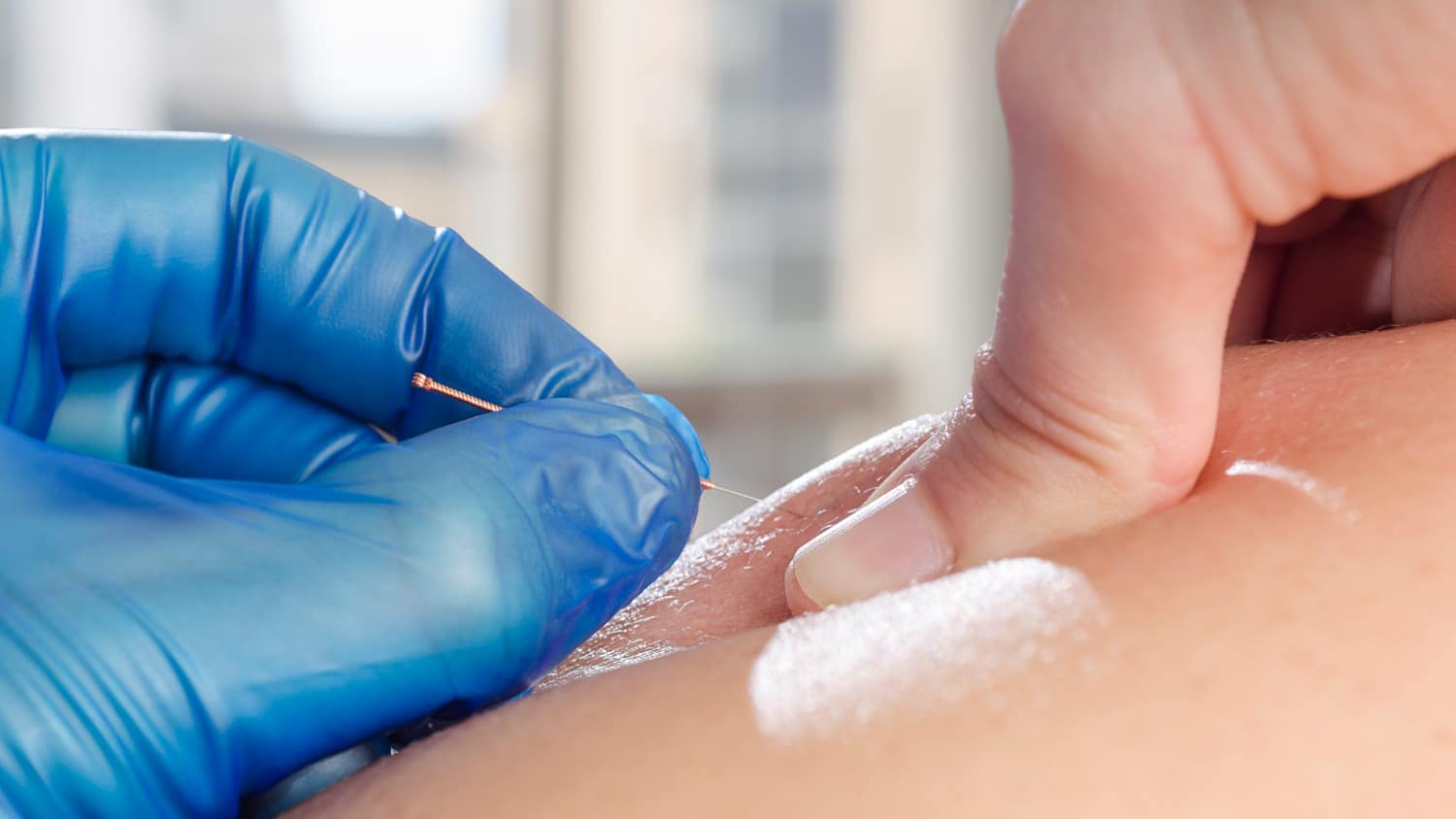
Dry Needling: What Is It and How Does It Work?
Dry needling is a relatively new treatment method that is gaining in popularity. But what is it, and how does it work? This blog post will discuss the basics of dry needling and its benefits.
What Is Dry Needling?
The CDC reports that nearly 1 in 4 people in the United States suffer from joint and muscle pain. Many people use natural remedies such as massage, topical ointments, or supplements to manage their pain.
Exercise and movement remain the best tools to maintain mobility and minimize joint and muscle pain, and natural remedies can provide pain relief in order to exercise effectively.
Dry needling is a natural pain relief treatment that uses thin needles to stimulate the muscles and trigger points in the body. Because dry needling is a manual therapy, it is usually performed by a licensed physical therapist and is part of an overall treatment plan. This manual therapy can help relieve pain, improve range of motion, and reduce inflammation.
Dry needling is based on the principles of acupuncture, but there are some critical differences between the two treatments.
Acupuncture is a traditional Chinese medicine that has been used for centuries to treat various conditions. It involves the insertion of thin needles into specific points on the body. These points are connected to energy pathways, or meridians, that can help restore body balance. Eastern Medicine is a comprehensive medical approach, and acupuncture is one treatment option within that system.
In contrast, dry needling is not used to diagnose or treat a specific condition. Instead, it uses thin needles similar to acupuncture needles inserted into myofascial trigger points to release muscle tension and promote healing. The hands are inserted into the muscles directly rather than into specific points.
What Are Trigger Points, and How Do They Develop?
Trigger points are tiny knots that form in skeletal muscle. They can be caused by various events, including overuse, repetitive motions, and poor posture. They are also common around arthritic joints.
Trigger points can cause pain in the muscle or other areas of the body when they become aggravated. Referred pain is when pain radiates from its origin – in this case, the trigger point – and causes pain in other areas. For example, a trigger point around the knee may cause knee pain and pain around the knee and into the leg.
Trigger points are identified through palpation and are usually sore to the touch. Dry needling is used in clinical practice to treat these myofascial trigger points and alleviate pain.
What Are the Benefits of Dry Needling?
Physical therapists use needles to release myofascial trigger point pain. Dry needling can offer several benefits, including:
- Reducing muscle pain
- Reducing muscle tightness
- Improving range of motion
- Reducing inflammation
- Increasing blood flow
Note: Dry needling should only be performed by a trained and licensed healthcare professional.
A 2021 systematic review and meta-analysis in the Physical Therapy and Rehabilitation Journal concluded that dry needling effectively decreased pain. However, there is also evidence that dry needling is no more effective than other physical therapy modalities.
In general, dry needling is most effective when it is coupled with other physical therapy treatments to treat pain. Dry needling effectively allows trigger points to release and muscles to relax, allowing pain-free movement in order to strengthen and mobilize muscles and joints.
What Are the Risks of Dry Needling?
Dry needling is generally considered a safe treatment method, but some potential risks are involved. These include:
- Bruising
- Bleeding
- Muscle soreness
- Infection
- Nerve damage
During treatment, the area will be cleaned, and gloves should be worn to minimize the risk of infection. Treatment is usually quick, and the patient may feel discomfort as the needles hit the trigger points. Relief can be immediate or take a few hours.
What Conditions Can Dry Needling Treat?
Dry needling is best for myofascial pain and other soft tissue injuries. It is most useful as an intramuscular manual therapy where a local twitch response helps to reduce muscle tension.
Dry needling can be used to treat a variety of conditions, including:
- Myofascial pain syndrome
- Tension headaches
- Piriformis syndrome
- Plantar fasciitis
- Shin splints
- Achilles tendinitis
- Chronic back pain
- Whiplash
- Knee pain
Dry needling is an effective treatment method for many conditions.
Is Dry Needling Good for Osteoarthritis?
The research on dry needling is limited, and there is no high-quality evidence to support the widespread use of dry needling. However, some studies have shown that it may be effective for other conditions such as chronic low back pain and shoulder pain.
Dry needling works on muscle trigger points to release tension and alleviate pain. Osteoarthritis limits the mobility in a joint and will consequently cause tightening of the surrounding muscles, and trigger points can develop.
Dry needling may help alleviate some of this reactive tightness from osteoarthritis and provide temporary relief. One of the best treatments for osteoarthritis is gentle exercise. If dry needling offers enough comfort for you to exercise, it is worth a try.
Can Dry Needling Help with Chronic Pain?
There is evidence that dry needling can help with chronic pain, although the research is limited. A 2017 systematic review and meta-analysis found that dry needling effectively reduced pain in people with chronic musculoskeletal pain. However, the authors noted that the evidence was of low to moderate quality, and more research is needed.
Dry needling may become more popular as we move to a post-Covid world. Up to 15% of patients report long term muscle and joint soreness after recovering from their acute stage of Covid. Dry needling may provide natural relief for these long Covid symptoms.
How Do I Know If Dry Needling Can Help Me?
The best way to know if dry needling can help you is to speak with your healthcare provider. They will be able to assess your individual needs and make a recommendation based on the best evidence available.
If you are already in physical therapy, mention to your physical therapist whether dry needling might be suitable for you.
Disclaimer: This article is not intended to provide medical advice. Please consult with your doctor to get specific medical advice for your situation.
What do you think of non-mainstream treatment methods when it comes to pain? Have you tried dry needling and, if so, how did it go?
Tags Medical Conditions






